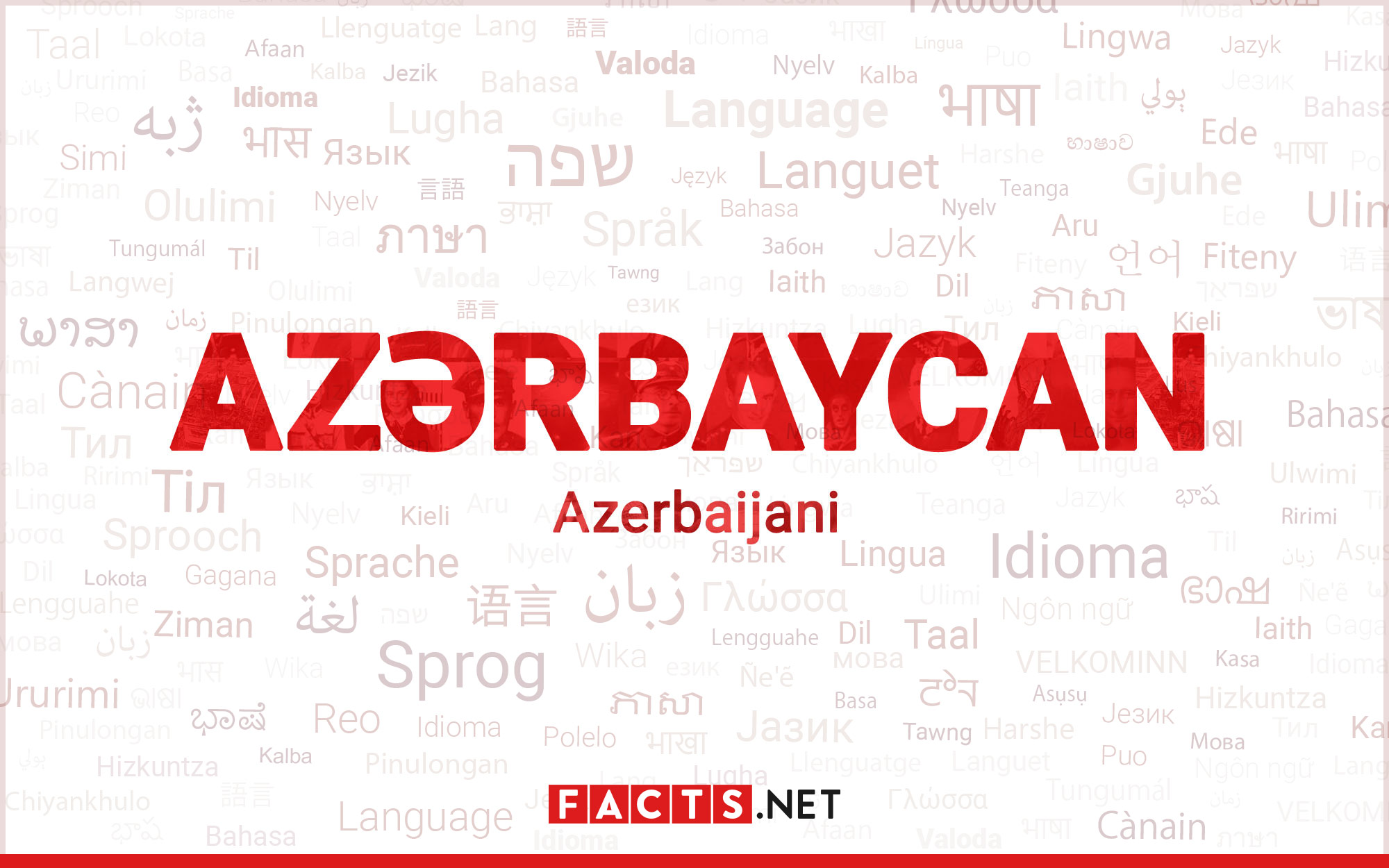
Azerbaijani, also known as Azeri, is a fascinating and enigmatic language that holds a rich history and cultural significance. Spoken primarily in Azerbaijan and parts of Iran, Turkey, and Russia, Azerbaijani has over 30 million speakers worldwide. This Turkic language has deep roots that date back centuries and has experienced various influences and developments throughout its evolution.
In this article, we will delve into the intriguing world of Azerbaijani and explore 12 captivating facts about this language. From its unique linguistic features to its cultural significance, we will uncover the mysteries and complexities that make Azerbaijani truly remarkable. So, strap yourself in for a linguistic adventure as we embark on a journey to discover more about the enigmatic Azerbaijani language.
Key Takeaways:
- Azerbaijani, a member of the Turkic language family, has a rich history and unique features. It has multiple dialects, a unique alphabet, and influences on other languages, making it a captivating subject for language enthusiasts.
- With its melodic vowel harmony and rich poetic tradition, Azerbaijani is spoken by millions worldwide. Its intricate linguistic structure and cultural significance make it a fascinating language to explore and learn.
Azerbaijani belongs to the Turkic language family.
Azerbaijani is a member of the Turkic language family, which includes other prominent languages like Turkish, Kazakh, and Uzbek. This linguistic connection makes Azerbaijani mutually intelligible to some extent with these languages.
Azerbaijani has multiple dialects.
Just like many other languages, Azerbaijani exhibits regional variation, resulting in several dialects spoken across different areas. The main dialects are North Azerbaijani, South Azerbaijani, and Iranian Azerbaijani, each with their own unique features.
Azerbaijani is written using a modified version of the Latin alphabet.
In 1991, Azerbaijan transitioned from using Cyrillic script to a modified Latin script for writing Azerbaijani. This change aimed to align the language closer to Turkic roots and promote cultural and linguistic identity.
Azerbaijani has borrowed words from various languages.
Throughout its history, Azerbaijani has absorbed words from different languages, reflecting influences from Persian, Arabic, Russian, and Turkic languages. This linguistic assimilation has enriched the vocabulary of Azerbaijani.
It is the official language of Azerbaijan.
Azerbaijani holds the status of the official language of Azerbaijan, where it is widely spoken by the population. It is also an official language of the autonomous region of Nakhchivan and co-official in some areas of Iran.
Azerbaijani uses vowel harmony.
Like many Turkic languages, Azerbaijani employs a vowel harmony system, where vowels in words harmonize based on backness and rounding. This phonetic feature gives the language a melodic and rhythmic quality.
Azerbaijani has both grammatical genders and cases.
Azerbaijani exhibits a grammatical gender system, with nouns being classified as masculine, feminine, or neuter. Additionally, the language has several cases, such as nominative, accusative, genitive, dative, and locative, which influence the form of nouns, pronouns, and adjectives in sentences.
Azerbaijani has a rich poetic tradition.
Azerbaijani has a long history of poetic expression, with literature dating back to ancient times. Renowned poets such as Nizami Ganjavi and Fuzuli have contributed greatly to Azerbaijani poetry, creating beautiful verses that are still revered today.
Azerbaijani has a significant influence on the Persian language.
Due to historical and cultural connections, Azerbaijani has had a considerable impact on the development of the Persian language. Many Persian words and expressions have been borrowed from Azerbaijani, enriching the Persian vocabulary.
Azerbaijani is spoken by millions of people worldwide.
With a population exceeding 30 million, Azerbaijani is spoken not only in Azerbaijan and Iran but also by diaspora communities in Turkey, Russia, Georgia, and other countries. Its widespread usage makes Azerbaijani an important language in the region.
Azerbaijani has its own unique alphabet.
Prior to the Latin script, Azerbaijani was written using the Arabic script. However, in the early 20th century, a modified version of the Latin alphabet was introduced. This alphabet, known as Azerbaijani Latin, represents the sounds of the language more accurately.
Azerbaijani is known for its intricate linguistic structure.
The grammatical structure of Azerbaijani is characterized by complex verb conjugations and a rich system of noun declensions. This intricacy adds depth and nuance to the language, making it a fascinating subject of study for linguistic enthusiasts.
These 12 enigmatic facts about Azerbaijani (Language) provide a glimpse into the unique features and cultural significance of this captivating language. Whether you are interested in its linguistic intricacies or its rich poetic tradition, Azerbaijani continues to captivate and inspire language enthusiasts worldwide.
Conclusion
In conclusion, the Azerbaijani language is a fascinating and enigmatic language with a rich history and unique features. Whether you are interested in languages or simply want to expand your knowledge, exploring the intricacies of Azerbaijani can be a rewarding experience. From its Turkic roots to its distinctive alphabet, this language holds many secrets waiting to be discovered.
FAQs
1. How many people speak Azerbaijani?
Azerbaijani is spoken by approximately 25 million people worldwide, primarily in Azerbaijan and Iran. It is also spoken by diaspora communities in Turkey, Russia, and other countries.
2. Is Azerbaijani similar to Turkish?
Yes, Azerbaijani is part of the Turkic language family and shares many similarities with Turkish. However, there are also some differences in vocabulary, grammar, and pronunciation.
3. What is the script used for Azerbaijani?
Azerbaijani is written using a modified version of the Latin alphabet. In the past, it was written in the Arabic script and then the Cyrillic script before transitioning to its current Latin-based script.
4. Are there dialects of Azerbaijani?
Yes, there are several regional dialects of Azerbaijani, including Northern Azerbaijani, Southern Azerbaijani, and Northwestern Azerbaijani. These dialects differ in pronunciation, vocabulary, and grammar.
5. Can I learn Azerbaijani as a second language?
Absolutely! There are resources available for learning Azerbaijani as a second language. Whether you’re interested in the language for travel, cultural appreciation, or professional purposes, learning Azerbaijani can be a rewarding endeavor.
Azerbaijani's linguistic marvels barely scratch the surface of this fascinating country. Why not explore Tofiq Bahramov Stadium's Azerbaijani roots or dive into Salishan languages' linguistic intricacies? For those eager to embark on their own language learning journey, Duolingo's astonishing facts might just provide the inspiration needed. Each topic offers a unique glimpse into the captivating world of language and culture, inviting readers to broaden their horizons and appreciate the rich tapestry of human communication.
Was this page helpful?
Our commitment to delivering trustworthy and engaging content is at the heart of what we do. Each fact on our site is contributed by real users like you, bringing a wealth of diverse insights and information. To ensure the highest standards of accuracy and reliability, our dedicated editors meticulously review each submission. This process guarantees that the facts we share are not only fascinating but also credible. Trust in our commitment to quality and authenticity as you explore and learn with us.


